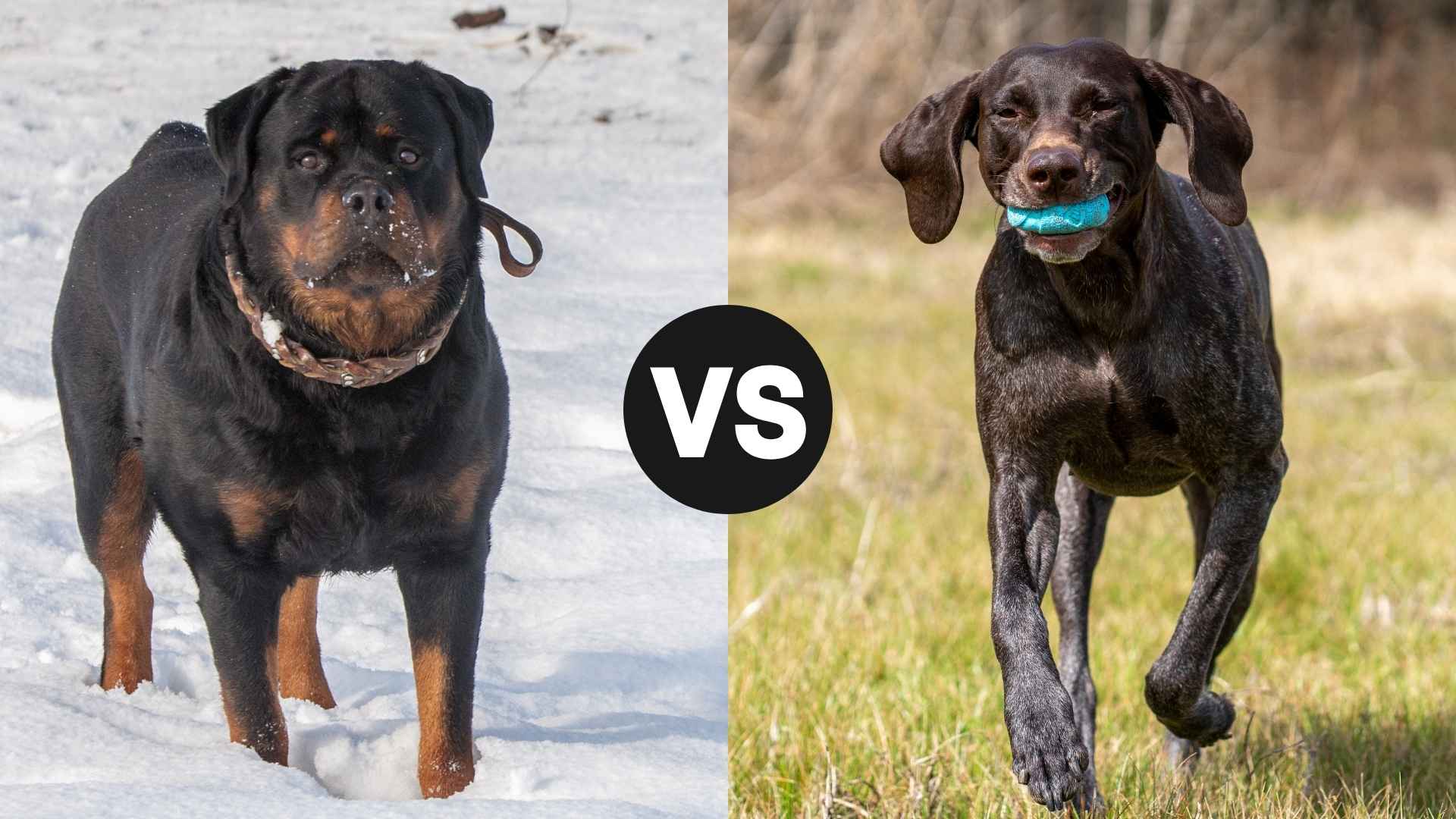The moment you start comparing Rottweilers and German Shorthaired Pointers, you realize you’re looking at two completely different worlds of dog ownership.
Both breeds are intelligent, loyal, and deeply devoted to their families, but similarities end there. Their exercise needs, training approaches, social requirements, and daily care routines couldn’t be more different.
One breed suits families wanting a calm, protective companion, while the other fits active households seeking an energetic adventure buddy. Before committing to either of these wonderful dogs, it’s crucial to understand how each breed will integrate into your lifestyle, schedule, and long-term plans.
This guide is going to break down everything you need to know to help you make the right choice for your unique situation.
Rottweiler vs. German Shorthaired Pointer
Size and Weight Comparison
Height ranges: stocky vs. athletic
Rottweilers have a visibly more muscular and compact build compared to German Shorthaired Pointers, who are tall, lean, and built for stamina.
A male Rottweiler usually stands between 24 to 27 inches, while females are slightly shorter at 22 to 25 inches. On the other hand, German Shorthaired Pointers tend to be more leggy, with males averaging 23 to 25 inches and females between 21 to 23 inches tall.
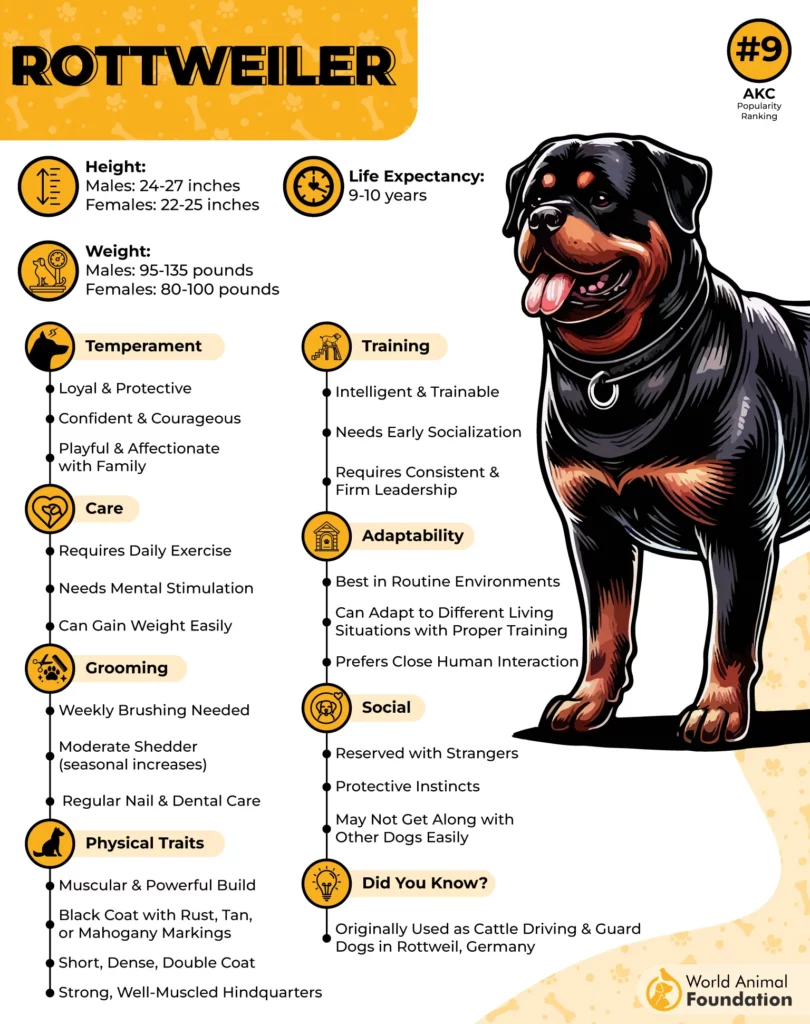
Weight tells the real story
This is where the contrast really shows. Adult Rottweilers are significantly heavier, with males ranging from 95 to 135 pounds and females from 80 to 100 pounds.
German Shorthaired Pointers, built for speed and agility, are much lighter. Males typically weigh 55 to 70 pounds, while females Pointers weigh around 45 to 60 pounds. So while both may appear large in height, their body mass differs by a lot.
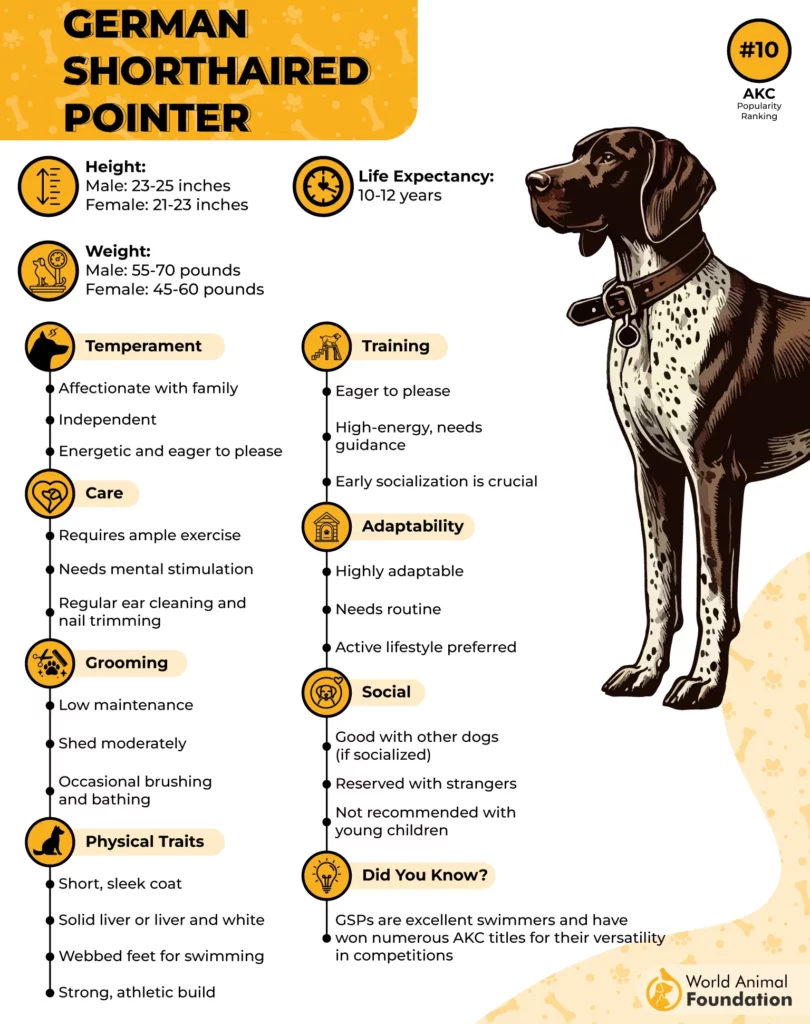
Frame and build for purpose
The size and weight differences aren’t just about looks — they’re linked to their origins. Rottweilers were bred for guarding and pulling, which explains their stocky frame and powerful necks. Pointers, however, were developed for endurance hunting, requiring a leaner, lighter form to move fast and for long hours.
Temperament and Personality Traits
Rottweiler: Calm confidence with strong loyalty
Rottweilers are often misunderstood as aggressive, but in reality, they’re confident, observant, and quietly attached to their people. They’re known for forming intense bonds with their owner, often being more aloof with others, as mentioned in PetMD.
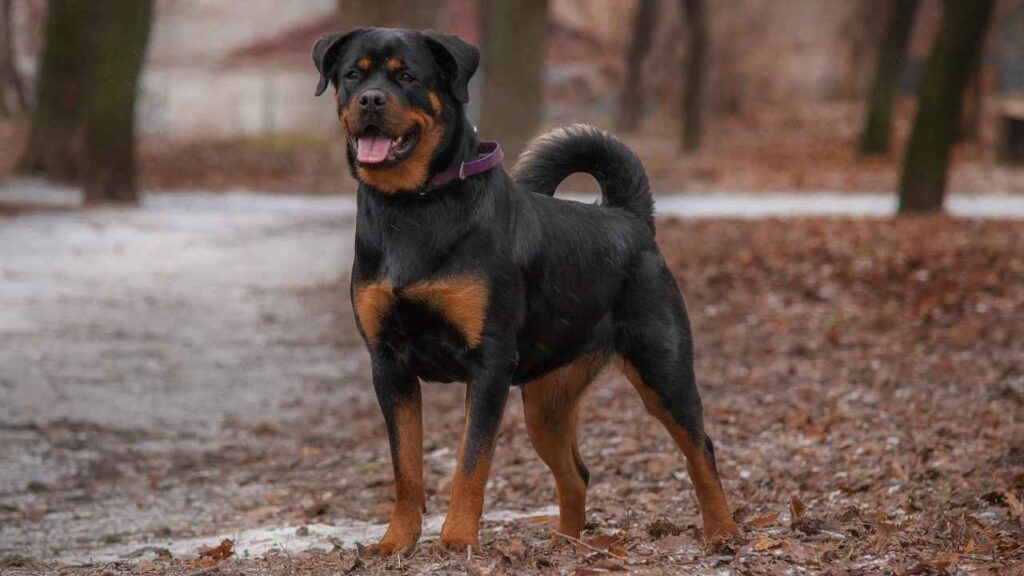
That makes them naturally protective, but not reactive — they think before they act. They don’t seek constant attention, but they do expect to be included in the household dynamic.
German Shorthaired Pointer: Energetic and people-driven
Pointers, by contrast, are more extroverted and emotionally expressive. They thrive in social environments and often greet strangers like potential playmates, as per the experts at the Kennel Club.

While they’re loyal, they spread their affection freely, which makes them less suited for guarding but ideal for active families. They crave interaction and can grow restless or destructive if left alone too long.
Affection levels and attachment
Both breeds are loving in their own ways, but it plays out differently. Rottweilers are more selective, often bonding deeply with one or two people.
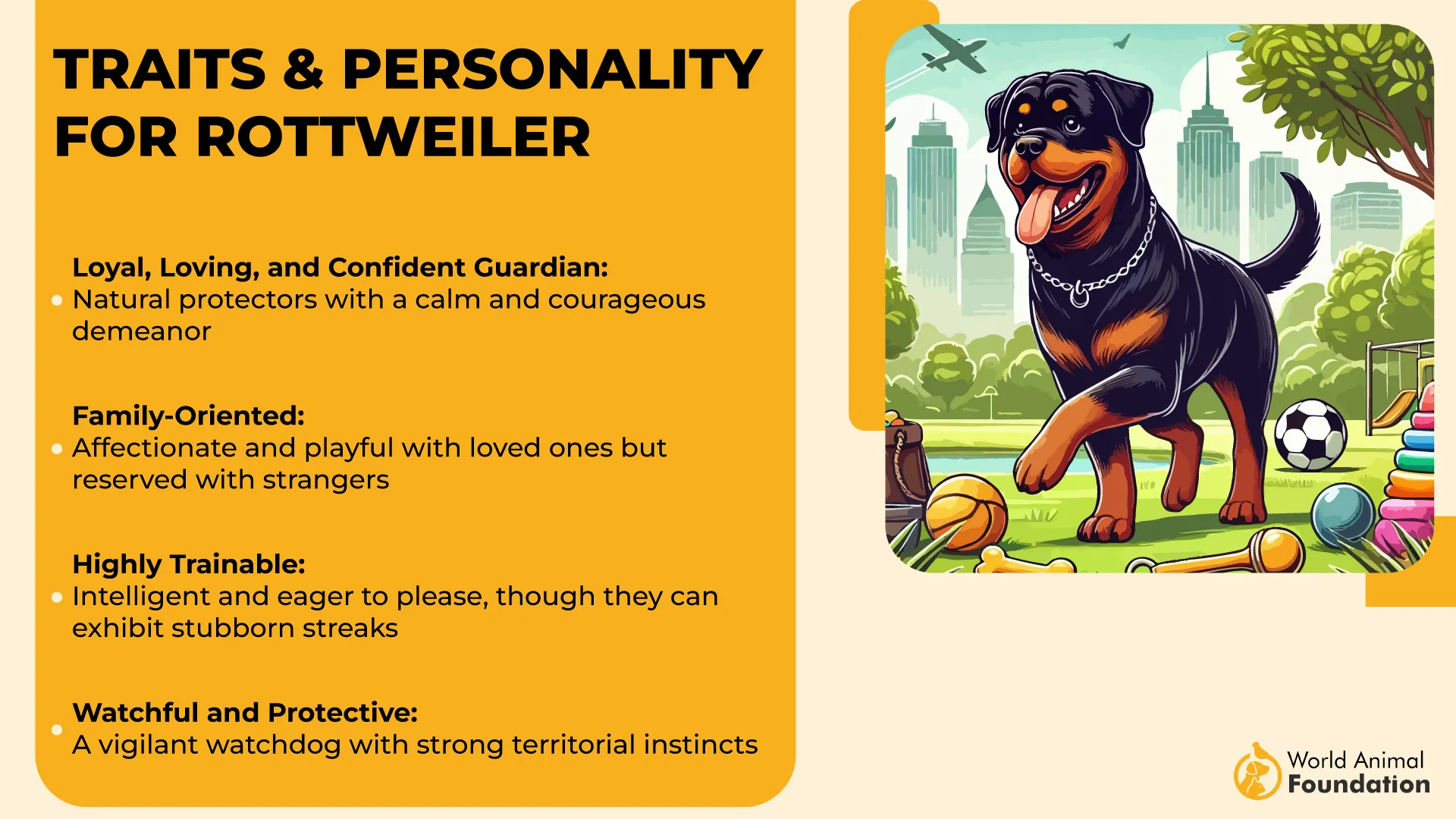
They show affection subtly — following their person from room to room, watching over kids, or quietly lying at their feet. German Shorthaired Pointers are overt in their affection, often climbing into laps, licking faces, and enthusiastically shadowing every movement.
Energy Levels and Exercise Needs
German Shorthaired Pointer: Built for action
This breed was designed to move — and it doesn’t stop. German Shorthaired Pointers need intense daily exercise, not just a walk around the block.
Think structured activities: trail running, agility, scent work, or off-leash play in secure areas. Without this kind of outlet, their energy builds up and can turn into unwanted behaviors like digging or destructive chewing.
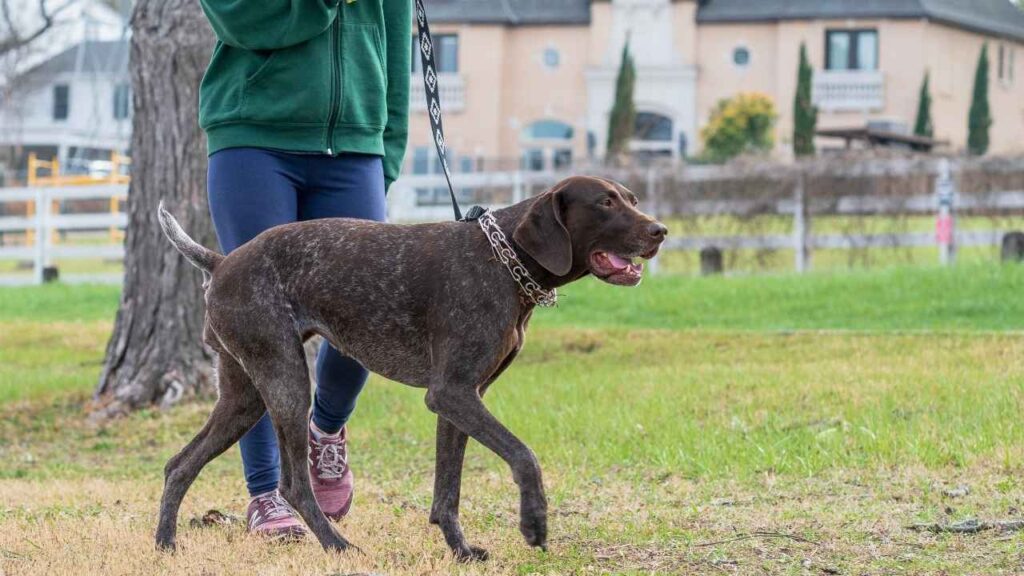
They chase anything that moves
Their prey drive is high, not just for birds or rabbits, but even for fast-moving toys or shadows. If you’re planning off-leash time, solid recall training is non-negotiable. The urge to chase is hardwired, and if they’re bored, they’ll invent their own games — sometimes at the neighbor’s expense.
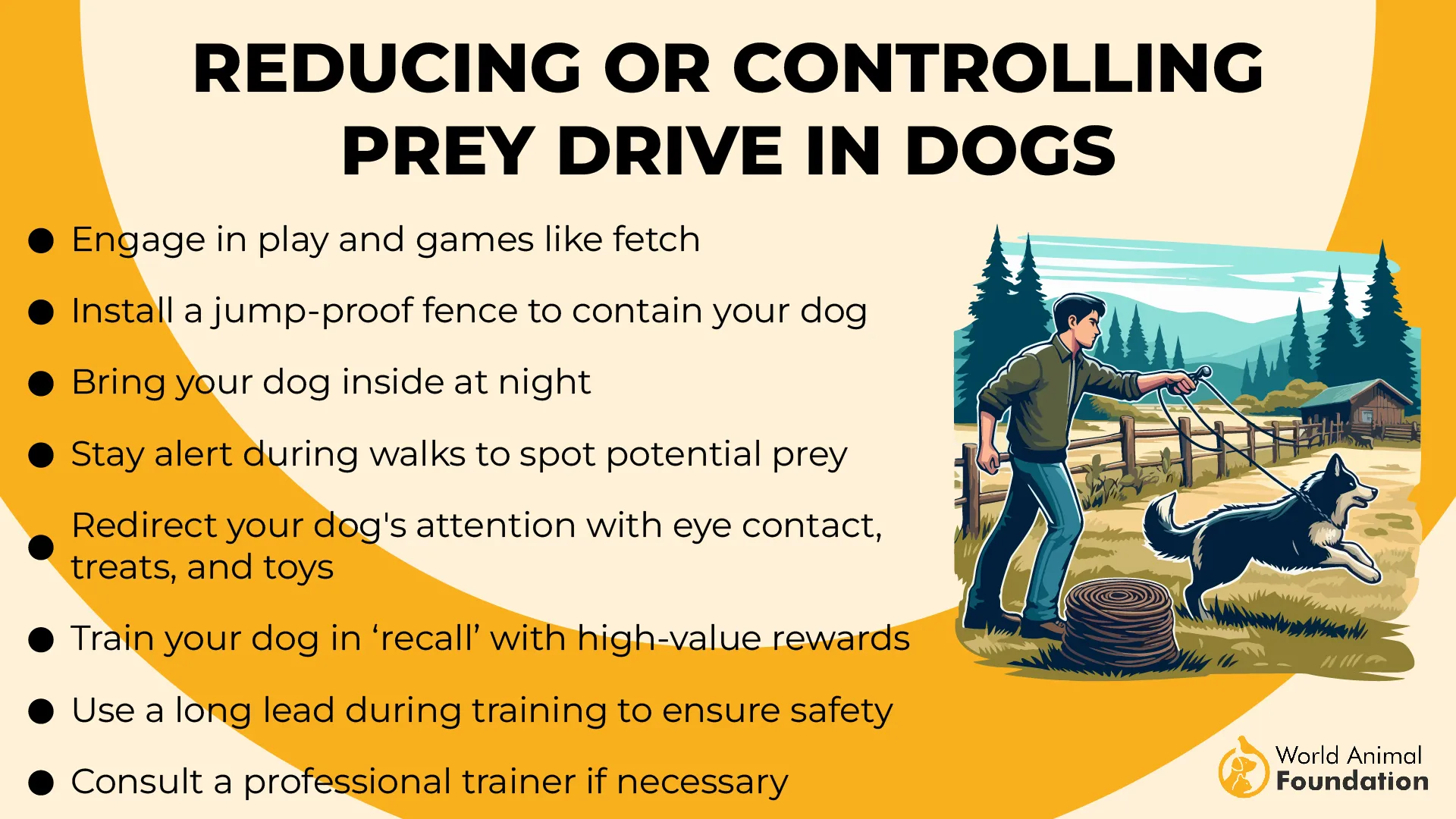
Rottweiler: Steady stamina over speed
Rottweilers are strong and enjoy structured exercise, but they don’t require as much constant motion. A good balance of strength training (like pulling carts or obstacle work) and long walks keeps them content. They’re far more focused than frenzied, and they thrive on purposeful activity over play-for-the-sake-of-play.
4. Adaptability and Independence
Rottweiler: Predictable but not passive
Rottweilers are routine-oriented. They adjust well to various environments — apartments, suburbs, or farms — as long as they’re mentally stimulated and included in family life.
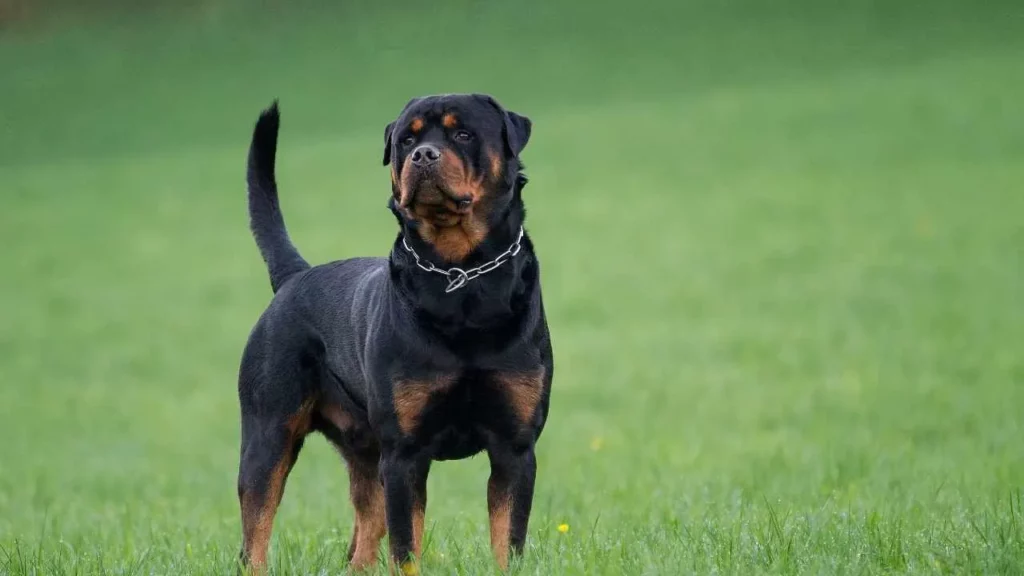
According to Greencross Vets, they’re independent thinkers but not loners. If left without interaction, they may become territorial or overly suspicious of strangers, especially if not socialized early.
German Shorthaired Pointer: Freedom lover with strings attached
While they might seem adaptable, Pointers struggle in tight spaces or quiet households. Their energy and sensitivity mean they tolerate boredom poorly. They’re also highly people-oriented and don’t enjoy being left alone. Independence here doesn’t mean self-sufficiency — it’s more about impulsiveness and curiosity taking the lead.
Noise levels and sensitivity
Pointers are vocal — they’ll bark when excited, curious, or trying to communicate. It’s not always excessive, but it can be consistent. Rottweilers are more restrained. Their bark is deep and purposeful, typically used as a warning or alert, not a running commentary.
Bite Strength and Mouth Behavior
Rottweiler: Bite force with purpose
Among large dog breeds, Rottweilers rank high in bite strength — their jaw pressure is estimated to be around 328 PSI. But they don’t use that power recklessly. Bred historically to guard and drive cattle, their bite is incredibly controlled, especially when properly trained.
What makes them notable isn’t just the force, but the way they bite: calm, calculated, and deliberate. This control is exactly why they’re favored in protection work — their instincts kick in only when they feel the threat is real.
They’re not typically mouthy in everyday life. If they do nip or tug, it’s usually a sign of under-stimulation or anxiety, not hyperactivity. Teething Rottweiler puppies, however, can be stubborn chewers — early redirection is key to save shoes, baseboards, and furniture.
German Shorthaired Pointer: Constant mouthing, lower pressure
Pointers have a significantly lower bite force — their jaws are more agile than powerful. But what they lack in strength, they make up for in frequency. Their retriever heritage means they often use their mouth to explore and interact. Expect light mouthing, carrying of toys, and playful nibbling to be part of their everyday behavior.
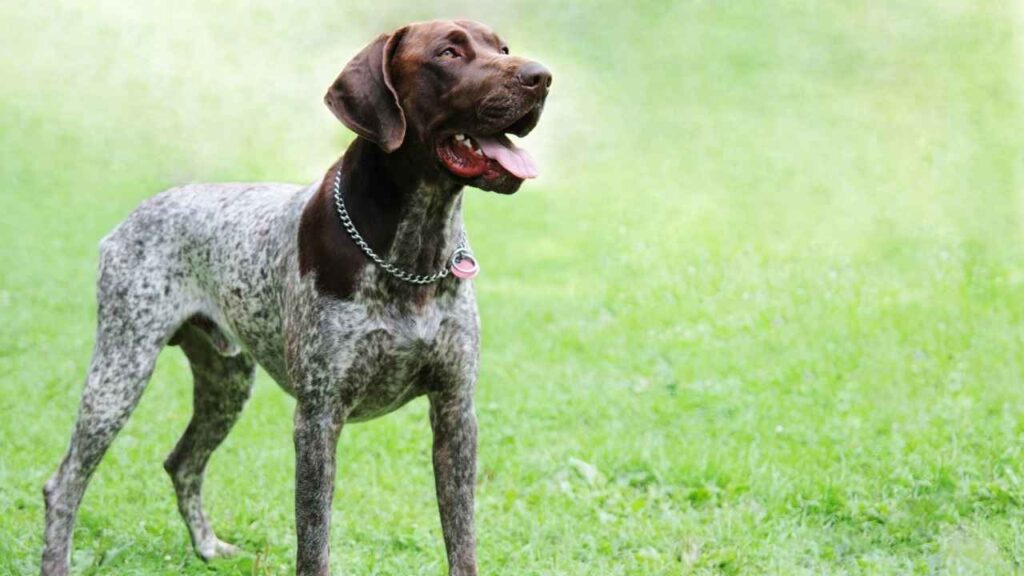
They’re naturally oral — from grabbing your sock to gently tugging at leashes. Left unchecked, this can escalate into problematic chewing or unwanted nipping, especially in high-energy situations. Training them to understand what’s okay to mouth (and when) helps avoid mixed signals later on.
Health, Lifespan, and Common Issues
Rottweiler: Robust but prone to serious conditions
Rottweilers tend to live around 9 to 10 years, and their size plays a role in that. One of the most common concerns is cancer, particularly bone cancer (osteosarcoma), which disproportionately affects the breed.
Hip and elbow dysplasia are also frequent issues, and responsible breeders often screen for both. Another health consideration is aortic stenosis, a congenital heart defect that can go undetected without proper cardiac exams.

Weight management is key for Rottweilers. Their broad frame makes them prone to joint stress if overfed or under-exercised. Bloat (gastric torsion) is also a serious risk, especially after meals, so feeding routines and post-meal rest are important preventive steps.
German Shorthaired Pointer: Hardy with a longer lifespan
German Shorthaired Pointers have a slightly longer lifespan — around 12 to 14 years. They’re generally hardy, but not without vulnerabilities. Hip dysplasia and epilepsy are among the more common genetic issues. Autoimmune thyroiditis, which affects metabolism and energy levels, is another condition seen in the breed.
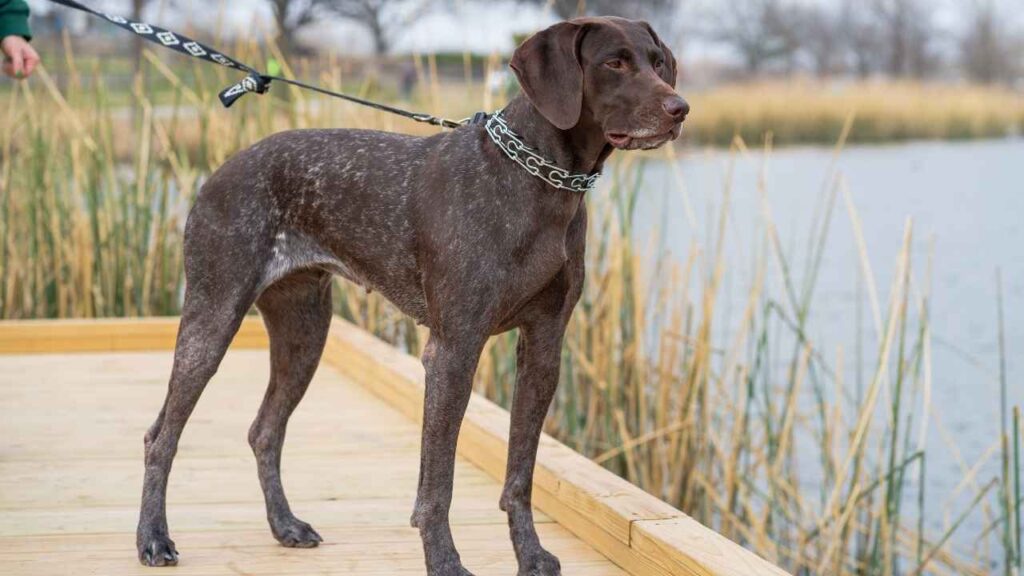
They’re also at risk for entropion — a condition where the eyelid rolls inward — and some skin allergies, often triggered by environmental factors like grass or cleaning products. While they’re lean and athletic, their low body fat makes them more sensitive to extreme cold, which owners in colder climates need to keep in mind.
Choosing the Right Breed for Your Lifestyle
If you’re constantly on the move and want a dog that can keep up, the German Shorthaired Pointer fits that life. They’re not an easy pet to manage without time and space. Their urge to catch and chase means they need a highly active owner and structured outlets like agility or fieldwork.
Rottweilers, on the other hand, are more suited to owners who want a steady, confident companion with protective instincts. They’re calmer indoors but need consistent training and early exposure to strangers to build trust.
Both breeds are rewarding but demanding in different ways. The best breed comes down to your energy level, time, and willingness to stay involved — neither thrives without that commitment.
Conclusion
The choice between a Rottweiler and German Shorthaired Pointer isn’t about finding the “better” breed – it’s about discovering which one will thrive in your unique situation. Both dogs bring incredible loyalty and love, but they’ll change your daily routine in completely different ways.
If you’re drawn to quiet strength and protective instincts, the Rottweiler might be calling your name. If you crave adventure and want a four-legged workout partner, the German Shorthaired Pointer could be perfect.
Remember that, unlike some other breeds, both of these dogs need serious commitment to training and socialization. Take time to honestly evaluate your lifestyle, space, and energy levels. Your perfect companion is waiting – you just need to continue exploring which path feels right for your home and heart.


